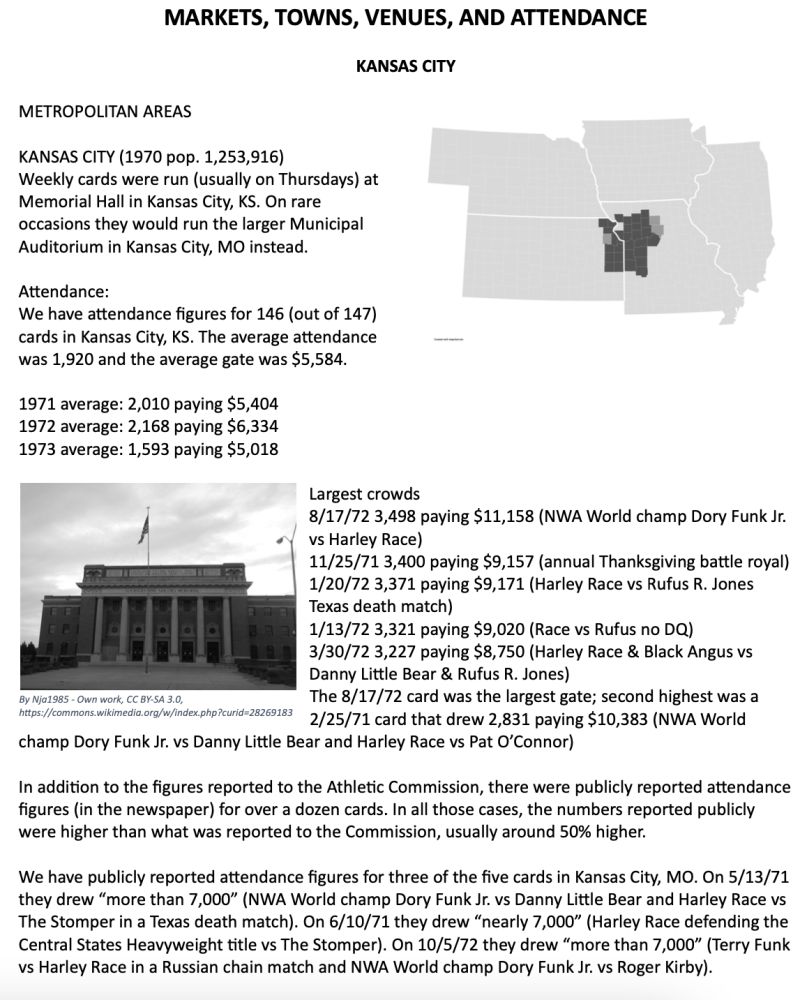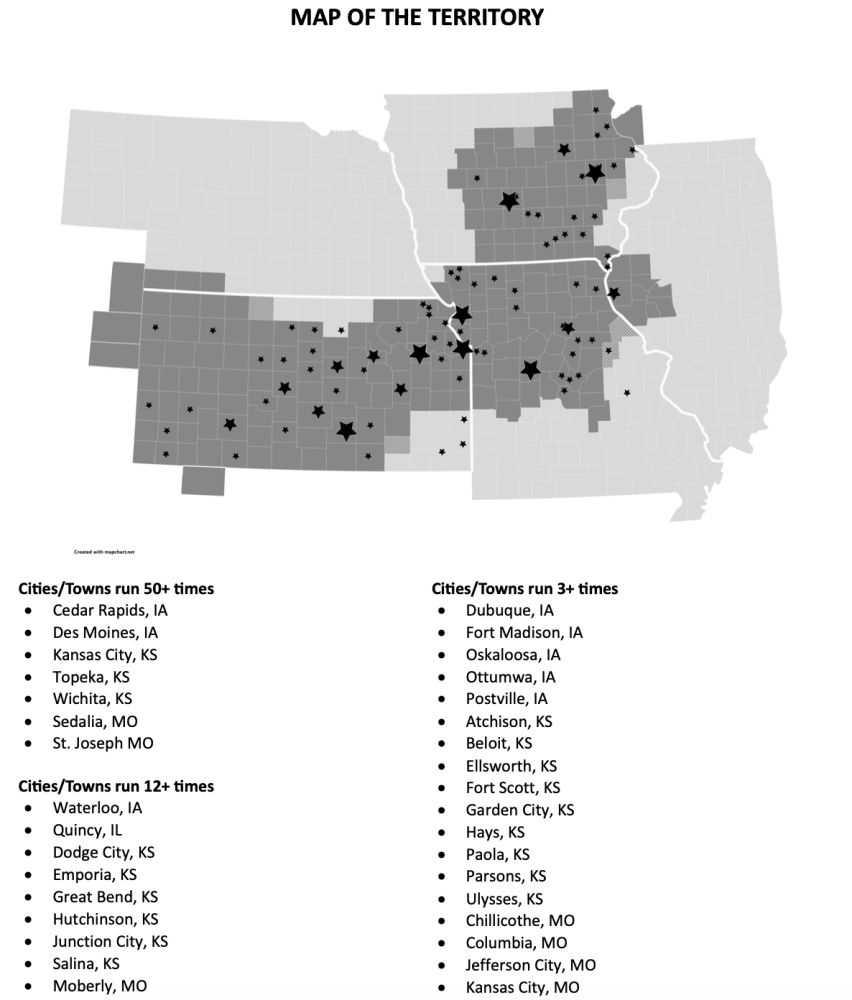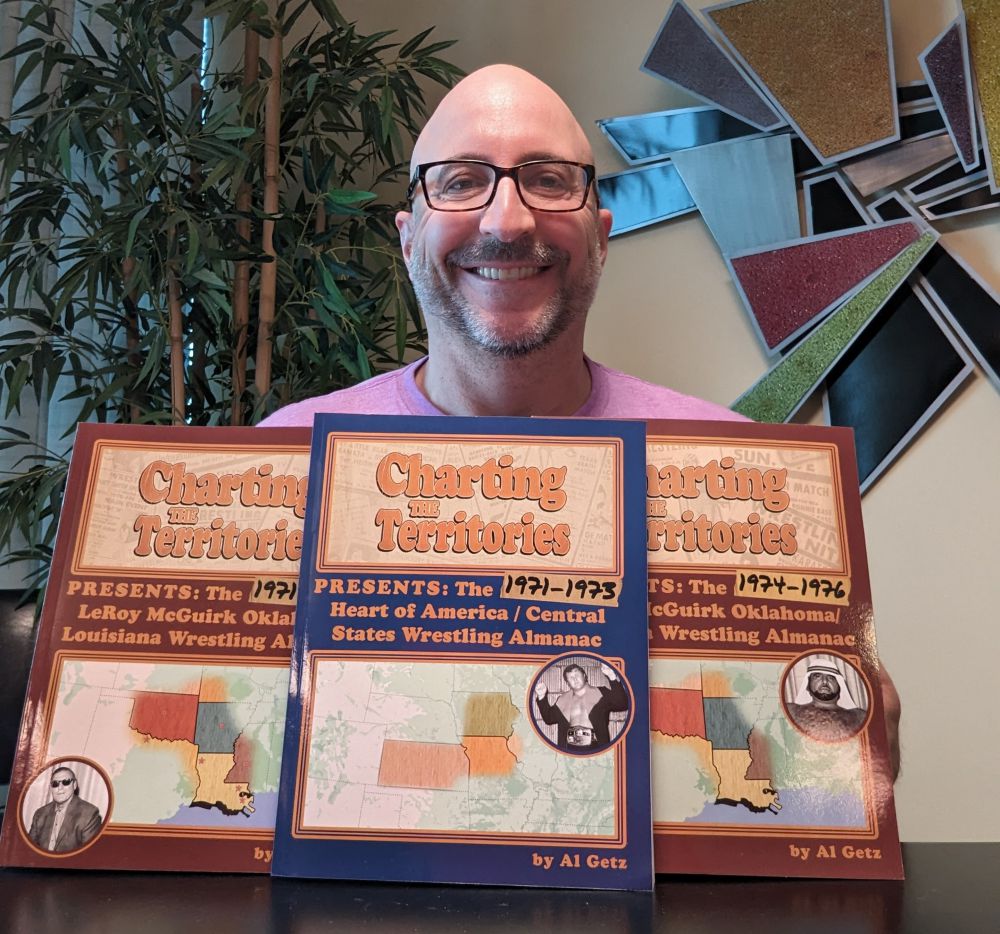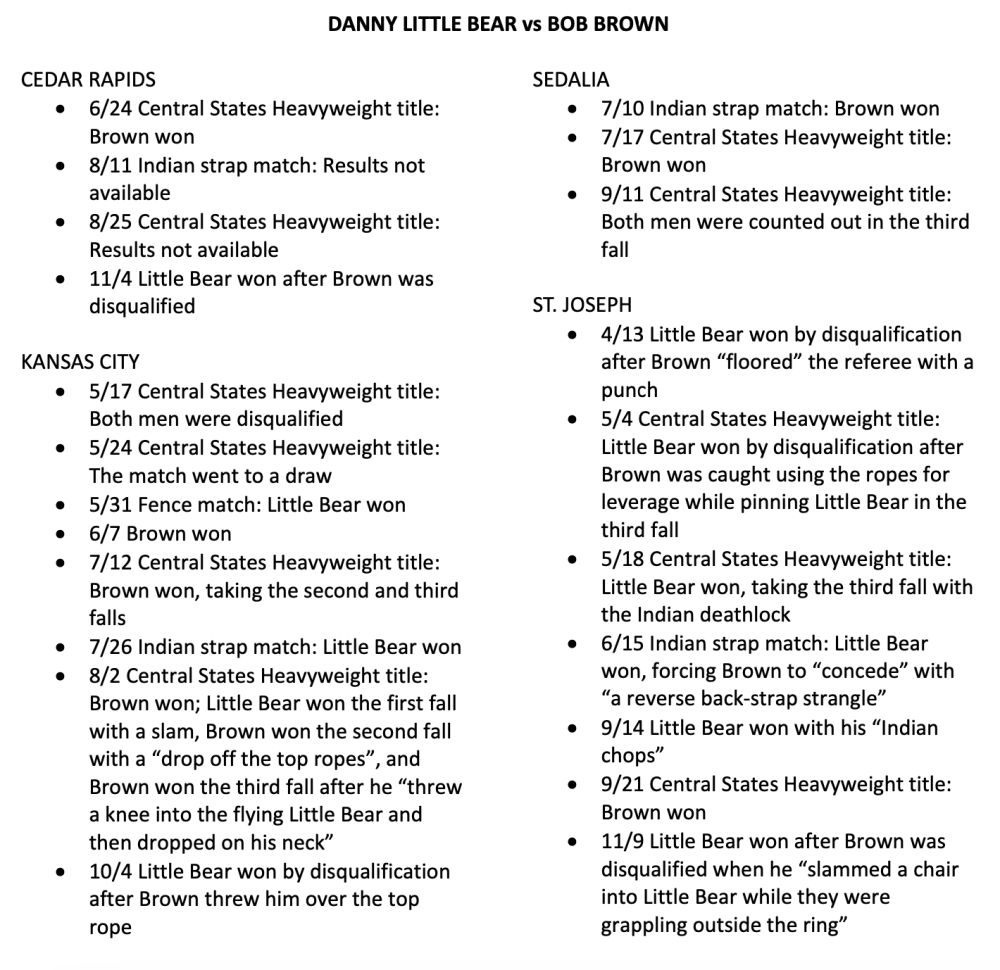I recently published my third book under the Charting the Territories brand. All three follow the same basic pattern, covering a three-year period in the life of a wrestling territory in the 1970s. However, the second book had some new features and improvements over the first, and the third book has even more. And it is my hope that future books continue this pattern.
I held off on publishing my first book for over a year. I wanted it to be like Curt Hennig in 1989: absolutely perfect. This, of course, is impossible. Once I came to that realization, I also became aware of the fact that the longer I held off on writing it, the greater the chances that I’d never write it. So I wrote it. And it’s not perfect. But that’s perfectly okay.
With the feedback I got from the first one, I was able to get a better feel for what readers were looking for or what they thought was missing. Their suggestions helped me make the second book better. And from that second book came the feedback, suggestions, and ideas to make the third one even better.

Charting the Territories details for Kansas City territory
The new book, The 1971-1973 Heart of America / Central States Wrestling Almanac, looks at Heart of America Sports Attractions (affectionately referred to by many as Central States Wrestling) from 1971 to 1973. It tracks Harley Race’s dominance in the territory. He was positioned as the top heel in the territory for much of the period, leading up to his first NWA World Heavyweight championship reign. The book has records for over 1,000 house shows held in the territory over those three years, significantly more than have ever previously been documented. Like my first two books, it also lists the top wrestlers and feuds for each year, lists all title holders, and has a map showing the area in which the territory operated. And as I mentioned earlier, it’s got a few new features.

Charting the Territories map for Kansas City territory
One of these new additions is a breakdown of the territory by the individual TV markets. In this era, cable television was in its infancy. According to The Rise of Cable Television, there were approximately 4.5 million subscribers to the 2,500 or so cable systems available in the U.S. in 1970. But most of these systems offered a mere handful of channels, and the FCC had strict rules on what they could and could not air: for example, they were “forbidden to show movies that were less than ten years old or sporting events that had occurred within the past five years.”
Wrestling fans got their weekly fix the old-fashioned way: with a rabbit-ear antenna capturing the signal from a local TV station. Heart of America is believed to have had television in nine different markets covering most of Kansas, Missouri, and Iowa, and even stretching into a small portion of western Illinois. There were at least two separate weekly television tapings, one in Kansas City and one in St. Joseph, Missouri. In the other seven markets, it’s possible some of them had their own separate tapings, while the rest aired the TV originally broadcast in another market. This now-obsolete practice was called “bicycling.” After the TV aired in one market, they would literally take the original tape and send it to a station in another market after recording over the local promos (a wrestler who did an interview screaming that he would get revenge “this Thursday night in Kansas City at Memorial Hall” would film an entirely new one, now promising vengeance “Sunday night at the Cedar Rapids Coliseum”).
Adding another twist to the differences in these different markets is the fact that promoters could have completely different angles, storylines, or narratives in each one. Because fans in Des Moines had no knowledge of what was going on in Wichita (save for a small number of hardcore fans who exchanged typewritten newsletters and fan club bulletins), they could switch things up in those towns. A main event that drew a sellout crowd in one city may have had a non-conclusive finish to build to a rematch the following show. But if that same main event drew poorly in another market, they may have chosen to “cut bait”, book a decisive finish, and try a different main event the next time out in the hopes of drawing a larger crowd. Fans in those different markets were watching different stories unfold before their eyes, and none were the wiser to what was going on in the rest of the territory.

Al Getz with his Charting the Territories books.
Charting the Territories takes all available house show records from the whole territory to figure out which feuds had the most “legs”. We then look at those feuds broken down on a market-by-market basis, so you can see how (and when) the feud unfolded in each. This also lets you see that sometimes, the stipulation for a rematch (no disqualification, lumberjack match, manager banned from ringside, etc.) was tied to the finish of their previous match in that specific market. And sometimes, one wrestler will win the blowoff match of a feud in one market while their opponent wins the blowoff in another.

Charting the Territories details for Danny Little Bear vs Bob Brown in the Kansas City territory
For each market, we also note the major cities run in each, the venues they ran, and the frequency with which each was run. The Kansas Historical Society’s State Archives have boxes worth of original documents from the Kansas Athletic Commission, and thanks to those we have attendance and gate records for virtually every card run in the state (thankfully, their main weekly venue was in Kansas City, Kansas, and not across the border in Kansas City, Missouri).
The books from Charting the Territories also include listings of the complete roster, the wrestlers who were booked regularly for at least some portion of a three-year time period. This information is presented in a unique graphical timeline. You can see when each wrestler was there, their position on the cards (were they usually in the main events, the mid-cards, or in the preliminary matches), what (and when) their biggest feuds were, and what titles they held (and when they held them). This lets you get a feel for each wrestler’s role in the territory, and how that may have changed over time.
While many wrestling books are focused on the behind-the-scenes dirt and gossip, Charting the Territories is a first-of-its-kind attempt to show how these territories functioned. Additionally, my goal is to focus on some of the lesser-documented territories. My first two books covered LeRoy McGuirk’s territory based in Oklahoma, Louisiana, and the surrounding areas. In September of 1979, LeRoy famously split with his business partner Bill Watts, who took Louisiana and Mississippi and started up Mid-South Wrestling. Much has been written about Mid-South, but far less ink (or web site/computer gigabytes) has been spent on McGuirk’s territory prior to that split.
The same can be said for Heart of America, which has the reputation of being on the lower end of a theoretical “depth chart” that ranks all the different territories. But just like every other territory, there are Hall of Famers (over 20 of ‘em!), nationally known superstars, rookies who would go on to stardom, and a few surprising names (Baron Scicluna! Frank Hickey!). Perhaps after reading the book, you’ll not only have a much higher opinion of Heart of America, but you’ll want to know even more about the other lesser-documented territories. And hopefully, that day will come, as I don’t just want to chart a couple of territories, I want to chart them all.
RELATED LINKS
- July 11, 2024: Al Getz managed a complicated journey to Melby Award
- Feb. 7, 2023: Passion, effort shines through in Charting the Territories
- Buy The 1971-1973 Heart of America / Central States Wrestling Almanac at Amazon.com or Amazon.ca
- Buy autographed copies of Al’s books at www.chartingtheterritories.com
- Al Getz on X/Twitter
- Listen to the Charting the Territories podcast
- SlamWrestling Master Book List

